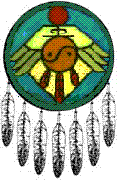

 Click The Images To Go To Page Indicated In The Flag
Fragments of Los Angeles AA History AA Grapevine June, 1990 In 1939, there was no AA group west of Akron, but in Los Angeles, Ty M., a practicing alcoholic, had been given a prepublication multilith copy of the Big Book. He was impressed, saying it was the "first time he'd ever seen something which understood him -- who he was and why he drank." Kaye, his nonalcoholic wife, had been trying for several years to sober her husband up, and she immediately wired the New York office for the nearest location of a meeting. Undeterred by the response that the nearest AA group was in Ohio, Ty and Kaye made the long trip to Akron so that Ty could join with Dr. Bob and the Akron group. Kaye traveled on to New York for an inspired talk with Bill W., who gave her a copy of the newly published Big Book. She attended an AA meeting in New York, and returned to Los Angeles resolved to spread the fame of this new and most promising movement, whether Ty got sober or not. Kaye was true to her resolve. She was soon in contact with Genevieve D. and Johnny H., nonalcoholic social workers in Los Angeles, and was asked to explain the AA recovery program to parolees of the Superior Court who had been jailed for being drunk and disorderly. Barney H. and Hal S. were a few of the first enthusiasts from among the parolees. The first actual AA meeting was held at Kaye's home on Benecia Street in Westwood on December 19, 1939, with about fifteen present. Of those fifteen, not many were successful in the new program of recovery -- with the exception of Hal S., who proved to be an indefatigable twelfth-stepper, and later founded AA in San Diego. But Kaye felt she was a failure and the meetings ceased. Bill W. wrote later, "That first candle in Los Angeles was flickering, but it never quite went out." Mort J. walks centerstage next -- a recent arrival in Los Angeles from Denver, where his doctor, who specialized in alcoholism and drug addiction, had shown him a copy of the Big Book. Mort was intrigued, but went on a monumental binge through the western states and Mexico before reading and absorbing the Big Book message. Now in Los Angeles and eager for a meeting, he called New York and was given Kaye's name and address. When she told him that "there aren't any meetings anymore" and that "the AA members are all drunk," Mort insisted that he wanted to get in touch with them, and he did, using Kaye's index cards of prospects, which he fished out of her wastebasket. Mort rented a room on the mezzanine of the Cecil Hotel on Main Street, in Los Angeles' Skid Row, and the first meeting took place in March of 1940. About ten men showed up. Mort, not sure of how an AA meeting should be conducted, opened the meeting by discussing his five months of sobriety. Then he decided to read "How It Works" from the Big Book, and that apparently began the practice, not only in California but in many AA groups around our AA world, of reading, "Rarely have we seen a person fail. . ." at the beginning of a meeting. By the time the Saturday Evening Post story on AA was published in March of 1941, the group at the Cecil Hotel was firmly entrenched. The three stalwarts of the group -- Mort J., Cliff W. and Frank R. -- reacted zealously to hundreds of pleas for help, and the number of AA members mushroomed. Among those who found AA in Los Angeles at this time was Sybil C., who called and asked Cliff to send the AA ambulance and was indignant when told there was no such thing. Sybil came to the meeting anyway, and is the first woman in AA to find lasting sobriety in the West. She went on to become the first secretary of the Los Angeles AA Central Office, and was honored at the 50th Anniversary International Convention in Montreal in 1985 as the woman with the longest sobriety in AA at that time. Another notable member who found AA at this time is Al M., a trombonist who played in movie studio orchestras. Al proved to be an impassioned service worker and sponsor, and was elected delegate on Panel 1. He championed Southern California AA -- "We were lucky we didn't have any help from over the mountains," he would say -- and remained extremely active in the Fellowship until his death in 1985.
Bill W. agreed that the growth of the Fellowship in Los Angeles was indeed remarkable. In recalling his 1943 visit to Los Angeles, he spoke about the big November 6th meeting at the American Legion Hall: "When I peered out from behind the curtain, I saw a thousand people sitting there. It was incredible. Here was evidence that AA could cross the seas and mountains pretty much on its own." Mort J., who was present, recalls that Bill shivered and then murmured, "Nothing can stop us now."
Index of A.A. History Pages on Barefoot's World
As in so many things, especially with we alcoholics, our History is our Greatest Asset!.. We each arrived at the doors of A.A. with an intensive and lengthy "History of Things That Do Not Work" .. Today, In A.A. and In Recovery, Our History has added an intensive and lengthy "History of Things That DO Work!!" and We will not regret the past nor wish to shut the door on it!!
ABC Page 60 -- Barefoot's Recovery Pages
KEEP COMING BACK!
On the Web December, 2008 in the Spirit of Cooperation Three mighty important things, Pardn'r, LOVE And PEACE and SOBRIETY |

